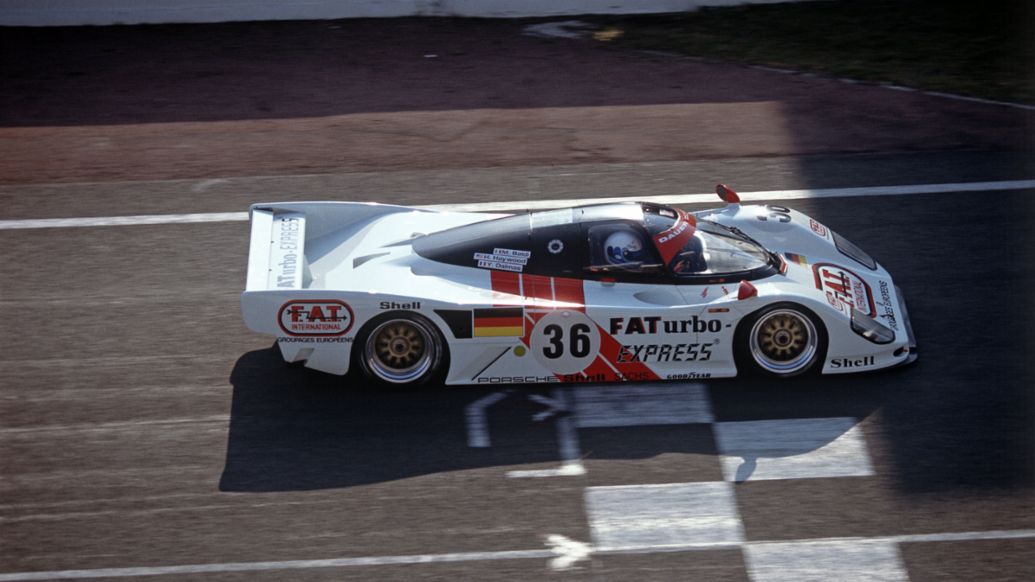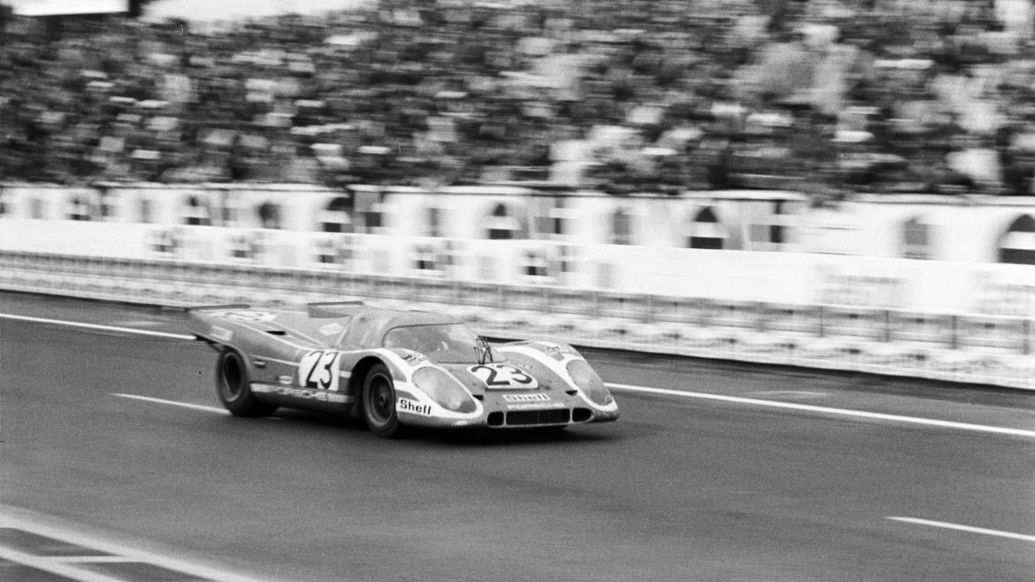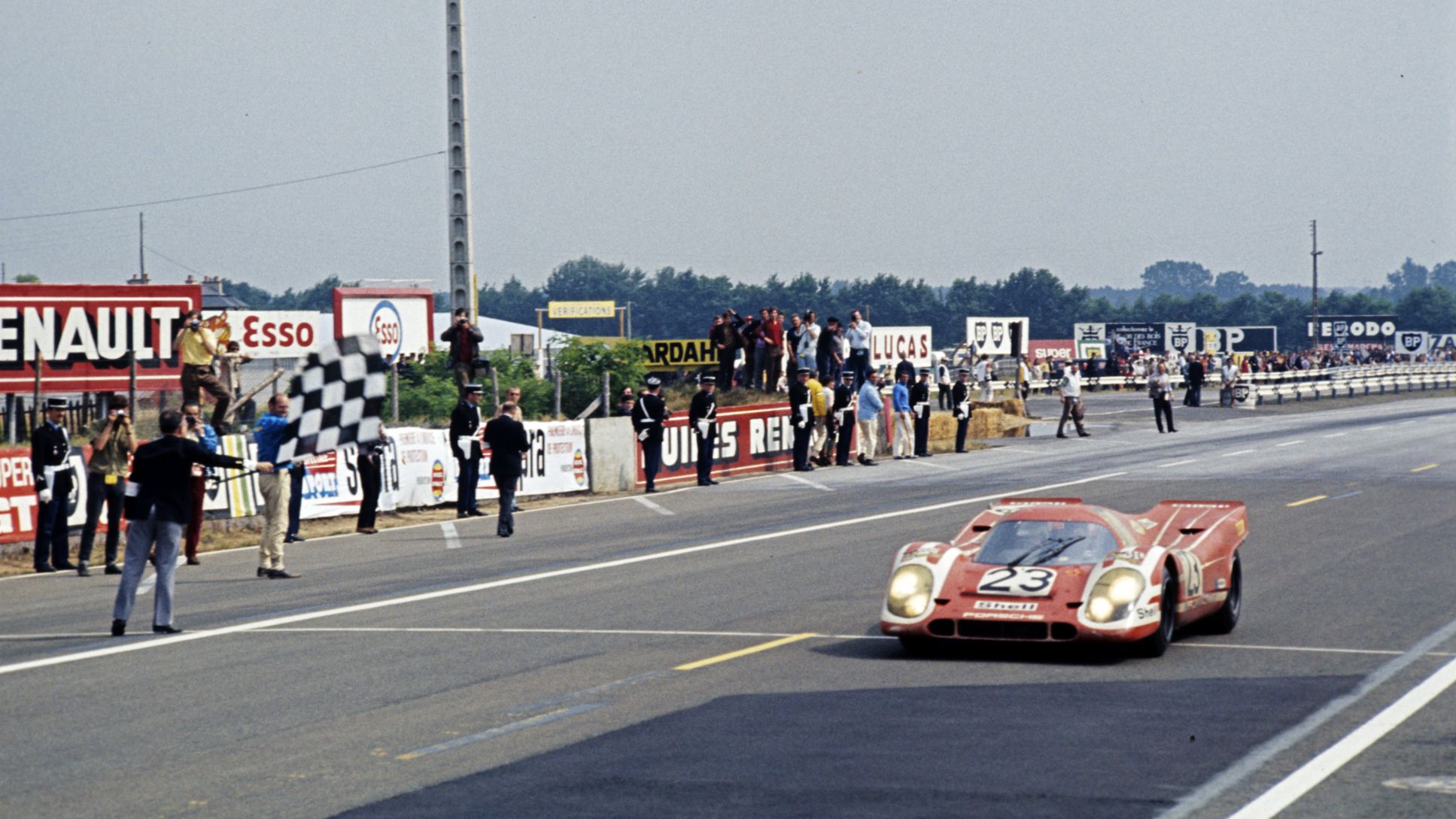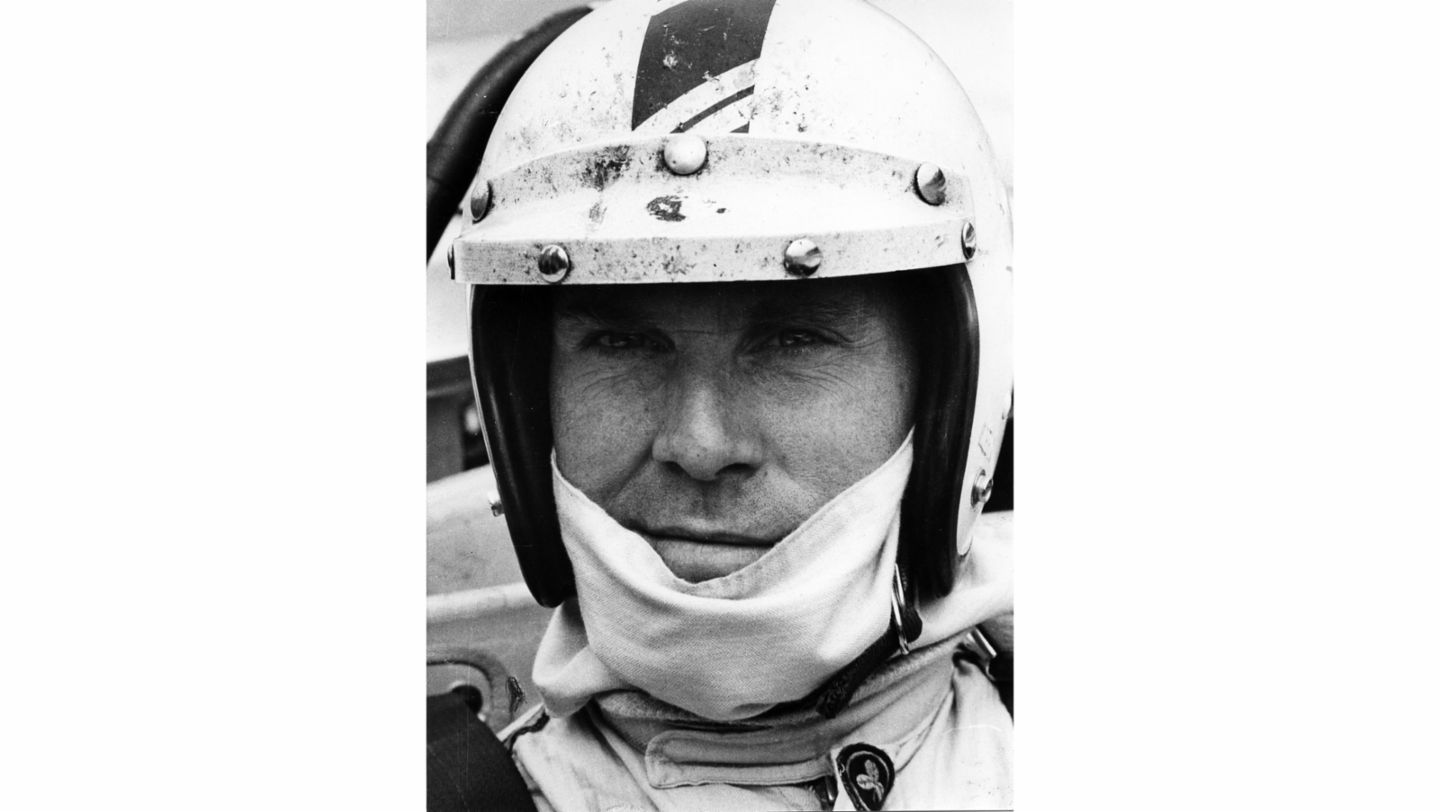On June 14, 1970, the checkered flag waved to end a spectacular race in chaotic weather. Only 16 of the original 51 starters completed the full 24-hour race distance with just seven of those having traveled far enough to be considered in the final classification. Porsche occupied the entire podium with a one-two-three finish. With 19 overall victories, the German marque holds the distinction as the winningest manufacturer in the history of the 24 Hours of Le Mans.

The story of Porsche and Le Mans began in 1951. A small group from Stuttgart-Zuffenhausen made its way to the tradition-rich race circuit 125-miles west of Paris with a pair of Porsche 356 SL race cars. One of the two-seater Porsche racers started and won the class for cars with an engine displacement up to 1.1 liters. Since this premiere, race or sports cars from Porsche have started in the 24 Hours of Le Mans every year through to the present-day Porsche 911 RSR factory and customer race cars in the LMGTE-Pro and LMGTE-Am classes. A world record of continuity.
Like Porsche and motorsports, Porsche and Le Mans simply belong together. Ferdinand Porsche (1875 – 1951) was the design engineer at the start of the company’s history and became famous as a result of his designs for legendary race cars. His son Ferry (1909 – 1998) founded the sports car marque. Ferry Porsche saw competition on the racetrack as a cornerstone of the corporate philosophy and was most interested in endurance races for sports cars and prototypes. This is because, unlike formula single-seaters, sports cars could be immediately recognized as a Porsche. There was a direct link between the technology of the racing sports cars and the technology used in series production cars. The durability of the sports-oriented technology at high speeds could only be demonstrated in endurance races. Moreover, the team and the marque were the winners in endurance racing, not the individual drivers like in Formula 1. The most famous of all endurance races was and remains Le Mans.

From the start, there has been a close link between motorsports and sports car construction at Porsche. Up to the end of the 1960s, a large number of employees helped in preparing the race cars ahead of Le Mans. Today, many engineers earn their first intensive training in Porsche motorsports. The auto racing environment provides lessons in the caldron of competition: time pressure is part of the norm, where creativity, the ability to improvise and innovativeness are demanded, and where meeting deadlines is non-negotiable. Peter Falk, Porsche’s long-standing chief race engineer, said: “No race is started later because we are not ready.”
Up to 1981, the testing department was not just responsible for testing and further development of the road sports cars, but also for race car development and motorsport. The links between motorsports and series production could hardly have been closer. Starting in 1982, a separate racing department was created within Porsche. However, the ties remain close as Porsche Motorsport is located at the Development and Research Center in Weissach, Germany. This means that intense technological transfer between the race track and the road still takes place today.

Use of technology in race cars has always been seen as a way of accelerating development. This applied in the past to disc brakes, lightweight construction, fuel injection and the Porsche dual-clutch transmission (PDK) just as much as it does today to high-voltage technology and torque vectoring.
Le Mans represents much more than competition, a technical test laboratory and an advertising platform. While Porsche had remained a constant player at Le Mans in the GT classes, in 2014, the “works” team returned to compete for the overall victory after a 15-year pause. Porsche communicated its “Mission: Our Return.” all over the world. At the headquarters in Stuttgart-Zuffenhausen, there was a race atmosphere for the whole Le Mans weekend. The Porsche Museum remained open day and night, and people could follow the race live on large screens located in the middle of race cars from previous decades exhibited around them. Thousands came. In 2015, 2016 and 2017, fans celebrated with Porsche: “We have won Le Mans.” Le Mans is part of the company – both in the technology and in the spirit.
Hans Herrmann and Richard Attwood reminisce about the race
In 1970, after exactly 4,607.811 kilometres or 343 laps, Hans Herrmann and Richard Attwood crossed the finishing line first in the Porsche 917 KH from Porsche Salzburg with the start number 23. “It was a race dominated by rain and it felt we had to permanently keep changing the tires and adapt to the situation at hand. It was not the wear that forced us to change tyres, but the constantly changing weather. The fact we harmonized so well together as a driving team led us to victory. To compete in a 24-hour endurance race with just two drivers is no mean feat,” says Hans Herrmann looking back.
Many of the competitors – amongst them numerous Porsche cars – gradually dropped out of the race. “Le Mans is a race where everything goes right, or it doesn’t. In those days, the 24 Hours was more like an endurance drive than a race,” remembers Richard Attwood. “To win Le Mans with Porsche and Hans came fully unexpectedly because our car didn’t have the right set-up for speeds. Hans and I were simply a dream team.”

We worked on the car in training until the very last minute. Hans Herrmann: “The 917 started out as a very difficult racing car. It was driving us rather than the other way round – until we managed to optimize the aerodynamics and transform it into a winning car.” Back home in Stuttgart, the Porsche victory was celebrated with a motorcade through the city and in the main square. “The victory gained in significance over the years. Who would have thought that Porsche would become the record title holder at this race,” says a pleased Richard Attwood. “I was also unaware at the time that I was contending with another personal challenge: I couldn’t eat anything during the race and could only drink milk to stay fit to drive. Because what I didn’t know was I had come down with mumps.”

-and-Richard-Attwood-(right)-on-their-winner-car-Porsche-917-KH-Coupé--23..jpg/jcr:content/Hans%20Herrmann%20(left)%20and%20Richard%20Attwood%20(right)%20on%20their%20winner%20car%20Porsche%20917%20KH%20Coup%C3%A9%20%2323..jpg)

